Keeping your pool water clean while managing electricity costs is a challenge many Perth homeowners face.
If you run your pump too little, water can quickly turn cloudy, algae may start growing, and chemicals won’t circulate properly.
On the other hand, running it too much drives up your power bills, especially with WA’s rising energy costs.
The good news is, there’s a sweet spot. For most Perth pools, running your pump for 8–12 hours a day will strike the right balance between crystal-clear water and energy efficiency. The exact time depends on your pool’s size, pump type, usage, and Perth’s seasonal climate conditions.
Why Pool Pump Runtime Matters
Your pool pump is the heart of your swimming pool’s circulation system. Running it for the correct amount of time each day ensures your pool stays clean, safe, and cost-efficient.
1. Circulates and Distributes Chemicals Evenly
When your pump is operating, it pushes water through the filter and keeps chemicals, such as chlorine, evenly distributed. This prevents dead spots where water can stagnate and bacteria may grow.
Inconsistent circulation is one of the main causes of poor water balance, forcing you to add more chemicals than necessary.
2. Prevents Algae and Bacteria Growth
Algae thrives in warm, stagnant water, a common challenge in Perth’s hot summers. By ensuring your pump runs long enough each day, you keep the water moving and disrupt conditions where algae and harmful bacteria can multiply.
This not only preserves water quality but also reduces the need for frequent shock treatments.
3. Maintains Water Clarity and Balance
Clear water is more than just a visual benefit. Proper circulation maintains the pH balance and supports filtration, meaning your pool stays healthier for swimmers.
Without sufficient runtime, dirt and debris accumulate faster, filters clog, and water becomes cloudy. Consistent circulation keeps your pool looking inviting while lowering chemical usage.
4. Protects Equipment and Reduces Long-Term Costs
Running your pump for the right duration doesn’t just benefit the water; it also protects your investment. Pumps that run too little are forced to work harder during peak cycles, while overuse wastes energy and shortens equipment lifespan.
Balanced operation prevents strain on the motor and filter system, helping you avoid costly repairs or early replacements.
How to Determine Your Pool Pump’s Daily Runtime
Finding the right daily runtime for your pool pump isn’t as simple as following a one-size-fits-all rule. While many guides recommend running it for 8–12 hours per day, the actual duration depends on three key factors: turnover rate, pump flow rate, and pool usage patterns.
1. Understanding Turnover Rate
Turnover rate is the time it takes for your pool pump to circulate the entire volume of water through the filter once. Maintaining a clean swimming pool in Australia requires completing at least one full turnover every 24 hours. For most household pools, this equates to a turnover rate of 6 to 8 hours per day.
If your pump does not run long enough to achieve this, dirt, debris, and bacteria may not be fully filtered, leading to cloudy water or algae growth.
On the other hand, running it much longer than required wastes electricity without significantly improving water quality.
Formula to calculate turnover:
Turnover Time (hours) = Pool Volume (L) ÷ Pump Flow Rate (L/hour)

Example:
- Pool Volume: 40,000 litres
- Pump Flow Rate: 500 litres per minute (30,000 litres per hour)
- Turnover Time = 40,000 ÷ 30,000 = ~1.3 hours per turnover
Since most pools need at least one full turnover cycle daily, you can use this calculation to determine how many hours your pump should run to achieve proper circulation.
2. Assessing Pump Flow Rate Capabilities
The flow rate of your pump determines how quickly it can circulate water. While turnover rate gives a general guideline, the pump’s specific flow capacity ensures that water moves efficiently through the filter and chemicals are distributed evenly.
For example:
- A pump with a higher flow rate can achieve turnover more quickly, meaning you may not need to run it as long.
- A smaller or less powerful pump may require extended operation to reach the same level of circulation.
Matching your pump’s flow rate to your pool’s volume is essential for both energy efficiency and water quality. Running a pump that is undersized for your pool will force you to run it longer, while an oversized pump may circulate too quickly without proper filtration.
3. Evaluating Pool Usage Patterns
Even if you calculate turnover and flow rate accurately, real-world usage can affect how long you should run your pool pump. Certain situations demand extended runtime to maintain water clarity and sanitation:
- Heavy Usage: If your pool is used daily by multiple swimmers or hosts frequent pool parties, a longer runtime is necessary.
- Hot Weather & Heatwaves: Perth summers create ideal conditions for algae growth, requiring extra pump circulation.
- Pets in the Pool: Dogs and other pets introduce hair, dirt, and oils, all of which put extra strain on your filter.
- After Rainstorms: Stormwater often carries debris and organic material that must be filtered out.
- Chemical Treatments: After shocking your pool or balancing chemicals, the pump should run continuously to ensure even distribution.
For lighter usage or during cooler weather, you can reduce runtime without compromising water quality. A good practice is to monitor water clarity and adjust runtime gradually, rather than sticking rigidly to a single schedule year-round.
Recommended Pool Pump Runtime in Perth
The ideal daily runtime for your pool pump depends on a combination of factors, including pool size, pump type, local climate, and maintenance habits.
While most pools in Perth require 8–12 hours of circulation per day, breaking it down by category gives a clearer picture.
1. Pool Pump Runtime by Pool Size
The size of your pool is the single most important factor in determining how long the pump should run each day.
Smaller pools can achieve full water turnover in less time because of their reduced volume, while larger pools naturally require more runtime to move all the water through the filter.
In Perth’s climate, this becomes even more significant, as hot summers accelerate algae growth and chemical breakdown, meaning larger pools must run longer to maintain water clarity.

For example, a small pool under 20,000 litres may only need 6 hours of circulation on a normal summer’s day, whereas a large pool over 40,000 litres may require up to 12 hours during peak heat to keep water healthy. Medium-sized pools, which make up most Perth backyards, typically fall between these two ranges.
| Pool size | Summer runtime | Winter runtime |
|---|---|---|
| Small (<20,000 L) | 6–8 hours/day | 4–6 hours/day |
| Medium (20–40,000 L) | 8–10 hours/day | 6–8 hours/day |
| Large (>40,000 L) | 10–12 hours/day | 8–10 hours/day |
Key Points
- Small pools: Shorter runtime is enough, but extend to the higher end if usage is heavy or pets swim frequently.
- Medium pools: 8–10 hours/day is the sweet spot, balancing efficiency and clarity.
- Large pools: Require the longest runtimes, especially in Perth summers, where algae risk is high.
2. Pool Pump Runtime by Pump Type
The type of pump you own is one of the biggest factors in determining how long you should run it each day. Pumps are not all designed the same — some operate at one fixed speed while others offer adjustable or programmable options that allow you to save money and fine-tune circulation.
In Perth, where electricity prices are high and summer conditions are harsh on pools, choosing the right pump type can mean the difference between a pool that is expensive to run and one that stays crystal clear at a fraction of the cost.
1. Single-Speed Pumps
Single-speed pumps are the traditional, older style pumps found in many Perth backyards. They operate at one constant speed, usually high, regardless of whether that much power is needed. This means they consume more energy than necessary for day-to-day circulation.
Because they cannot be adjusted, single-speed pumps usually require 8–12 hours of daily runtime to complete the necessary turnover cycles and maintain safe water quality.
They are effective at moving water but not cost-efficient, especially during long Perth summers when extended runtimes are essential. Over time, this can result in high energy bills and greater wear on the equipment.
- Best suited for: Smaller pools or older systems where upgrades are not yet feasible.
2. Dual-Speed Pumps
Dual-speed pumps are a step up in efficiency. They allow you to choose between low speed and high speed depending on the task. Most of the time, you can run the pump on low speed, which uses less power but still circulates water effectively.
High speed is reserved for short periods, such as vacuuming, backwashing, or after a heavy pool load (like a party or after stormy weather).
With this flexibility, dual-speed pumps can run 6–10 hours per day depending on pool size and conditions. On low speed, they save considerable energy compared to single-speed pumps, while still giving you the option of higher flow when needed.
- Best suited for: Medium to large pools where cost savings are important, but occasional high flow is necessary.
3. Variable-Speed (VS) Pumps
Variable-speed pumps are the most advanced and energy-efficient option available today. Unlike single-speed and dual-speed pumps, VS pumps are fully programmable.
You can set them to run at precise speeds depending on the pool’s needs, allowing continuous operation at very low speeds that keep water moving and chemicals evenly distributed while using minimal power.
A VS pump can often run 12–24 hours per day on low speed for less cost than a single-speed pump running just 8 hours. They also produce less noise, last longer due to reduced wear, and allow for smoother water circulation, which helps prevent algae and chemical imbalances.
For Perth pool owners, VS pumps are especially valuable because:
- They handle long, hot summers by allowing continuous circulation.
- They reduce electricity costs by up to 80%, an important factor with rising WA energy prices.
- They may be eligible for energy efficiency rebates, making the upfront investment more affordable.
Best suited for: Any homeowner looking for the most efficient, cost-effective, and long-term solution.
3. Pool Pump Runtime by Season
Perth’s climate plays a major role in how long you need to run your pool pump. With long, hot, and dry summers and mild, wet winters, the needs of your pool change significantly throughout the year.
Many generic pool care guides suggest running pumps the same way all year, but in Perth, this leads to wasted electricity in winter and inadequate circulation in summer.
To keep your water crystal clear while avoiding unnecessary costs, your pump schedule should adjust with the seasons.
Below, we outline the ideal runtimes for summer, spring/autumn, and winter in Perth, along with explanations of why each season requires a different approach.
1. Summer (December – February)
Perth summers are hot, dry, and sunny, with average daily maximums above 30°C. High temperatures and intense UV radiation have two major effects:
- Chlorine breaks down faster, meaning you need more circulation to distribute chemicals evenly.
- Algae grow quickly in warm water, especially if water circulation is insufficient.
Add to this the fact that pools are used more heavily during the summer school holidays, and you can see why summer requires the longest runtimes of the year.
Recommended Runtime: 10–12 hours/day
- Larger pools (>40,000 L) may require the full 12 hours or even two turnovers per day.
- Splitting the runtime into two cycles (morning and evening) ensures chlorine is consistently distributed and water clarity is maintained.
2. Spring (September – November) & Autumn (March – May)
The transitional seasons of spring and autumn have milder weather, with average temperatures between 20 and–28°C.
Pools are still used regularly, but not as heavily as in summer. Chlorine holds longer in cooler water, and algae growth slows down compared to the peak summer months.
In these seasons, your pool pump does not need to run as long as in summer, but you still need consistent circulation to prevent cloudy water and to keep your filter system working properly.
Recommended Runtime: 8–10 hours/day
- On cooler days, aim for the lower end of this range.
- On warmer days, especially late spring, closer to 10 hours is safer.
3. Winter (June – August)
Although Perth winters are relatively mild compared to other parts of Australia, pool usage drops dramatically during this time. Rainfall increases, which can help with water top-up, but also introduces debris and organic material into pools.
Some owners are tempted to switch their pumps off completely during winter, but this is a mistake. Without circulation, water becomes stagnant, leading to algae blooms and imbalances that are costly to fix later.
Instead, the goal in winter is to keep water moving just enough to maintain balance while saving on electricity.
Recommended Runtime: 4–6 hours/day
- This is sufficient to prevent stagnation and algae growth.
- Consistent but reduced runtime also extends the lifespan of your pool equipment.
Ideal Pool Pump Schedule
Most Perth pools need at least 8 hours of pump runtime daily, with adjustments based on pool size and season.
However, when and how you run the pump matters just as much as total hours. By using off-peak electricity times and splitting runtimes, you can save money and keep water consistently clear.
1. Peak vs Off-Peak Hours (Perth Electricity)
Electricity costs in Perth can vary significantly depending on the time of day. Synergy, Western Australia’s main electricity provider, offers time-of-use tariffs that divide the day into peak, off-peak, and sometimes shoulder periods.
Running your pool pump during off-peak hours (typically late at night or very early morning) can make a noticeable difference to your energy bill.
For example:
- Running a single-speed pump for 10 hours/day at peak rates can add up to a considerable monthly cost.
- Shifting even half of that runtime to off-peak hours can save Perth homeowners hundreds of dollars per year.
Running your pool pump at night might feel unusual, but as long as it achieves the required turnover and circulation, your pool will remain clean and well-maintained while your household enjoys reduced electricity expenses.
Why off-peak scheduling matters:
- Saves money by taking advantage of cheaper electricity.
- Reduces strain on the household grid during peak demand times.
- Works seamlessly with programmable timers or variable-speed pumps.
2. Splitting Run Times
Rather than running your pump for a long block of 8–12 hours, it is often more effective to split the runtime into two or more shorter sessions.
This helps maintain consistent water movement throughout the day, ensures chemicals are evenly distributed, and prevents stagnation.
For example:
- Instead of running 10 hours straight, you might run 5 hours in the morning and 5 hours in the evening.
- This way, chlorine added in the evening is circulated immediately, and debris collected during the day is cleared again in the evening cycle.
Splitting runtimes also helps reduce reliance on high-cost electricity periods. Automated timers, built into most modern pumps or added as aftermarket devices, make this process simple by allowing you to schedule precisely on/off cycles without manual intervention.
Benefits of splitting runtimes:
- Keeps circulation consistent throughout the day.
- Improves chemical distribution and water clarity.
- Reduces the risk of algae during Perth’s hot afternoons.
- Avoids running pumps during expensive peak electricity hours.
- Easy to automate with timers or smart pump systems.
Advanced Pool Pump Technologies
Pool maintenance has come a long way in recent years. Traditional single-speed pumps, while reliable, consume large amounts of energy and offer little flexibility.
Modern technology, new solutions like variable-speed pumps and smart automated systems, have transformed how homeowners care for their pools.
These innovations deliver better energy efficiency, cost savings, convenience, and equipment longevity, making them the preferred choice for many Perth households.
Variable-Speed Pump Advantages
Variable-speed (VS) pumps are quickly becoming the standard for pool owners who want efficiency without sacrificing performance.
Unlike single-speed pumps that operate at one constant high speed, VS pumps allow you to program and adjust speeds based on your pool’s needs.
Key benefits of variable-speed pumps:
- Energy Savings: Can reduce electricity use by up to 83% compared to single-speed models, an important factor given Perth’s high energy costs.
- Quieter Operation: Lower speeds mean significantly less noise, which is particularly useful for residential areas.
- Extended Lifespan: Reduced strain on the motor increases durability, making VS pumps a better long-term investment.
- Precise Control: Ability to fine-tune filtration rates ensures consistent water clarity and balanced circulation.
- Cost-Effectiveness: Higher upfront cost, but pays for itself through lower monthly energy bills and fewer replacements.
Smart Pumps and Automation
Smart pool pumps and automation systems add another level of convenience and control. These advanced pumps can connect to mobile apps or home automation systems, allowing you to manage pool maintenance tasks remotely.
Advantages of smart pumps and automation:
- Remote Control: Adjust pump settings from your phone or tablet, whether you are at home or away.
- Automatic Adjustments: Some models adapt automatically to changes in pool usage, water temperature, or even local weather conditions.
- Energy Efficiency: Scheduling features help you run pumps during off-peak hours, cutting electricity costs.
- Convenience: No need for manual adjustments, smart systems ensure your pool is always operating at peak efficiency.
- Flexibility: Perfect for Perth families with changing routines, heavy pool usage, or those who want hands-off maintenance.
Special Circumstances
Even if you follow the general guideline of running your pool pump 8–12 hours a day, certain situations require extra runtime to maintain water clarity and chemical balance.
Perth’s conditions, from hot summers to sudden winter rain, can quickly alter water chemistry. In these cases, adjusting your schedule ensures your pool remains clean, safe, and ready to use.
After Chemical Treatments
Whenever you add chlorine, algaecide, or other balancing chemicals, the pump must run long enough to distribute them evenly throughout the water.
If circulation is insufficient, chemicals can settle in pockets, leaving areas untreated and creating spots of high concentration that may damage surfaces or irritate swimmers.
- Recommendation: Run the pump 8–10 hours overnight after chemical treatment.
- This extended runtime ensures full mixing, allowing sanitizing agents to reach every part of the pool.
- For shock treatments, continuous overnight circulation is especially important.
After Algae Growth or Heavy Debris
If algae blooms occur or if storms and pool parties introduce large amounts of debris, normal runtimes are not enough. Extended pump operation works hand-in-hand with shock treatment to restore clarity.
- Recommendation: Run the pump 10–12 hours/day until the water is clear.
- Combine with a shock treatment to kill algae and improve sanitation.
- Clean or backwash the filter frequently to handle the increased load.
After Rainstorms
Perth’s winter rain can quickly unbalance pool chemistry. Rainwater dilutes chlorine levels, lowers pH, and carries organic matter into the pool, increasing the risk of algae and cloudy water.
- Recommendation: Run the pump 8–12 hours after heavy rain.
- Test the water and rebalance chlorine and pH as needed.
- Continue extended circulation until water clarity returns.
Energy Efficiency and Cost Savings
Running a pool pump is one of the biggest ongoing costs of owning a swimming pool.
In Perth, where electricity rates are high and pools often need long runtimes in summer, the difference between an inefficient pump schedule and an optimized one can amount to hundreds of dollars a year.
By calculating energy costs and investing in efficient technologies, pool owners can reduce expenses while maintaining clear, safe water.
1. Cost-Benefit Calculations
The cost of running a pool pump depends on its size, how many hours it runs, and your electricity tariff.
For example, a standard 1.5 kW single-speed pump running 10 hours a day costs about $4.50 per day, or more than $1,600 a year. In comparison, a modern variable-speed pump running at a lower setting might use only a third of that power, costing around $486 a year.
This difference highlights why efficiency matters so much in Perth, where summer demand and long runtimes quickly add up.
Key points:
- Pool pump energy use = size × runtime × tariff.
- A single-speed pump running 10 hrs/day can cost over $1,600 annually.
- A variable-speed pump under the same conditions may reduce costs to ~$486 annually.
- The difference highlights how runtime directly impacts energy bills.
2. Upgrading to Energy-Efficient Models
Upgrading to a variable-speed pump is the most effective way to reduce pool running costs.
These pumps adjust their speed to match your pool’s needs, circulating water efficiently while using up to 80% less electricity than single-speed pumps. They are also quieter and tend to last longer because the motor runs with less strain.
While the initial cost is higher, most homeowners recover the investment in just two to three years through energy savings, and some WA households may be eligible for rebates on efficient appliances.
Key points:
- Energy-efficient pumps allow continuous low-speed circulation for better water clarity.
- Reduced strain on equipment = longer pump lifespan.
- Quiet operation makes them ideal for residential areas.
- Rebates in WA help offset initial purchase costs.
Signs You’re Not Running Your Pump Enough
Running your pool pump for too few hours each day can quickly lead to water quality problems. In Perth’s hot climate, insufficient circulation allows algae, bacteria, and debris to build up faster than your pool system can handle.
While the exact runtime depends on pool size, pump type, and season, there are several clear warning signs that your pump schedule is too short. Addressing these early can prevent costly treatments or equipment strain later on.
Common Signs of Insufficient Pump Runtime
- Cloudy or Green Water: If the water starts to look cloudy, murky, or takes on a green tint, it is a clear sign that your pump isn’t running long enough to circulate and filter properly. This is often the first indicator of poor circulation.
- Persistent Debris: Floating leaves, dirt, or insects that don’t clear from the water surface suggest the pump and skimmer aren’t being given enough time to capture and filter debris effectively.
- High Chlorine Demand: If you find yourself adding chlorine more often than usual, it may be because the pump isn’t circulating chemicals evenly. Without proper mixing, chlorine burns off quickly and leaves areas untreated.
- Visible Algae: The appearance of algae on pool walls, steps, or the waterline shows that circulation is insufficient. Algae thrives in stagnant water, especially during Perth’s hot summers, and is one of the strongest indicators that runtime must be increased.
FAQs
How many hours should a pool pump run daily in Perth?
Most pools need 8–12 hours a day.
Can I split pump runtime into multiple cycles?
Yes, two cycles of 4–6 hours work well.
Is it better to run the pump during the day or at night?
Night is cheaper, but day helps mix chemicals.
Do Perth’s hot summers require more runtime?
Yes, run 10–12 hours daily in summer.
How long to run the pump after shocking?
Run 8–10 hours overnight after shocking.
To Sum Up
Most Perth pools need the pump to run 8–12 hours a day, adjusted for pool size, pump type, and the season. Using energy-efficient pumps and smart schedules, like off-peak hours or split cycles, can keep water clear while cutting costs.
For the best results, let the experts help. Contact 1PoolCare the Perth pool servicing professionals , setup, and advice tailored to your pool.
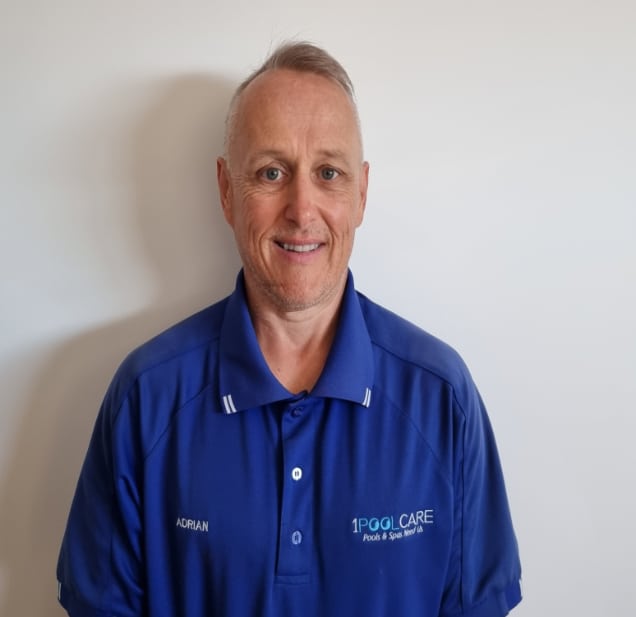
With over 20 years of industry experience, Adrian Mole is the founder of 1 Pool Care, a leading mobile pool service in Perth. Known for his expert knowledge and reliable service, Adrian delivers professional pool cleaning, equipment repairs, and water balancing across the metro area. Backed by SPASA accreditation, he’s committed to quality, convenience, and customer satisfaction.

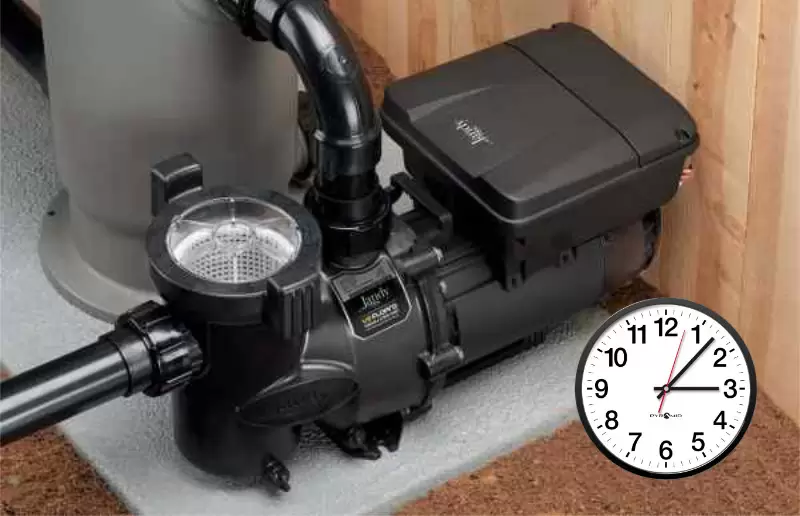

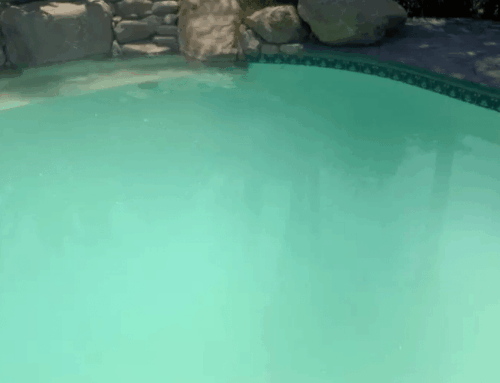
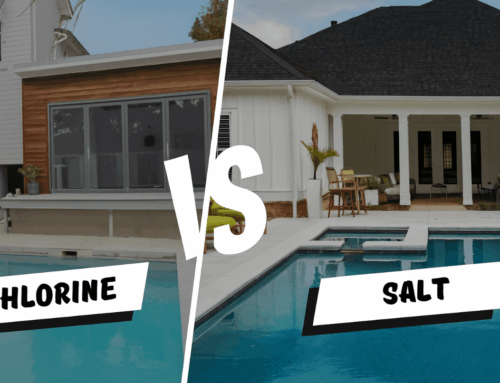
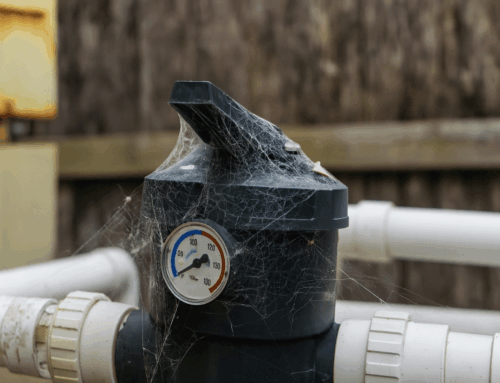





Social Media